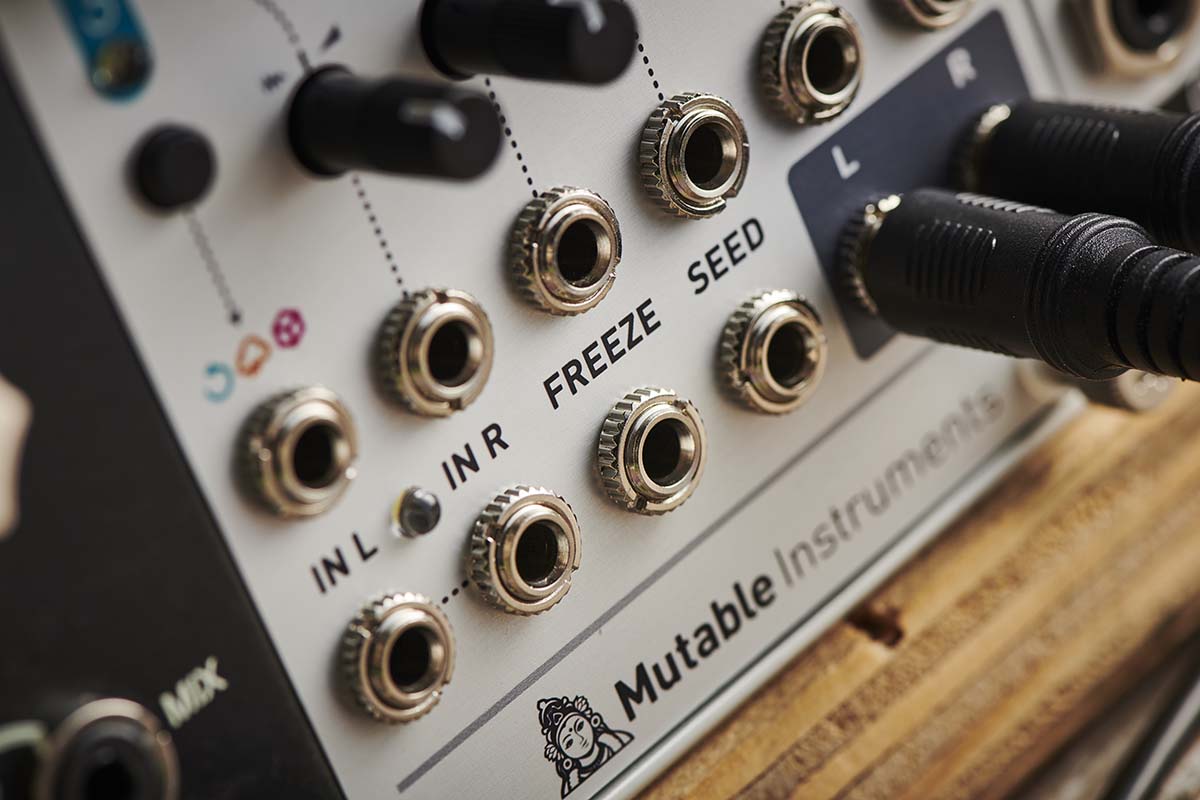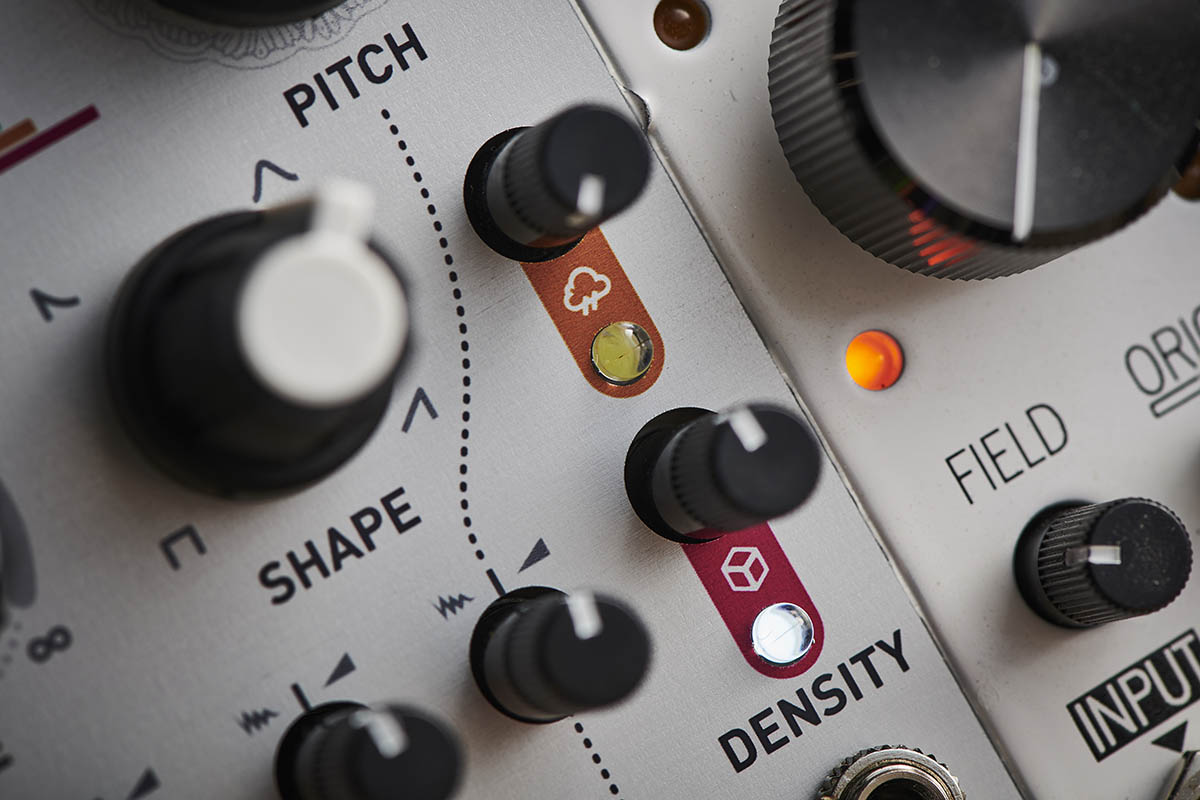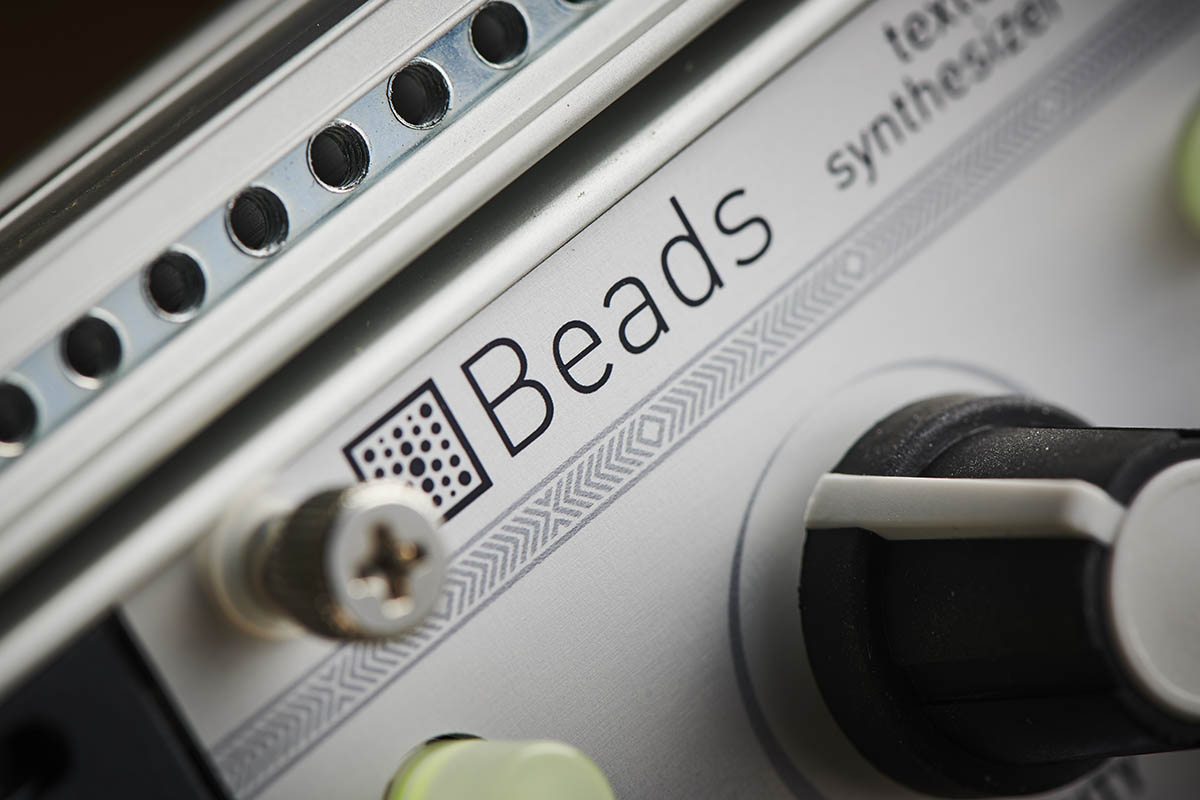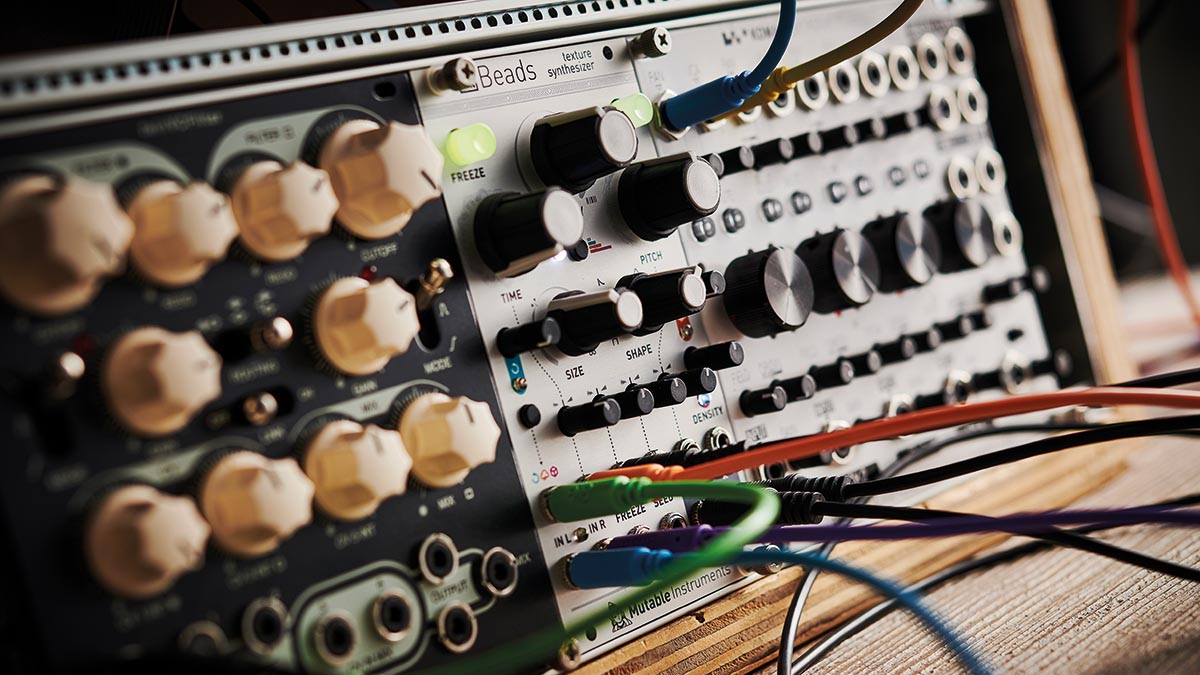MusicRadar Verdict
Smaller, more intuitive, sounds better and has more to offer than its venerable predecessor. Any modular musician could use it.
Pros
- +
Lots of character.
- +
Can act as a wavetable voice without audio input.
- +
Emulations for tape wow and flutter.
Cons
- -
Feedback, mix and reverb can only be modulated individually.
MusicRadar's got your back
What is it?
As the manual starts, ‘Once upon a time, there was Clouds. Then came time to clean up the mess’. So, let’s acknowledge that Beads is somewhat of a version 2 of Mutable Instruments’ immensely popular texture synthesizer.
The fact that it isn’t called Clouds 2 feels odd, but then, Beads is all-new; it may have a similar function but it’s a ground-up reimagining and the better for it.
To start with, it manages to fit in three more physical controls into a smaller space but feels somehow more manageable. The layout is logical, easy to read and playing with the various functions is far more straightforward.
There are some limits to this but they are few and come down to the modulation of the feedback, mix and reverb density, which share a modulation input jack. There is a button to select which of the three receives the modulation, with only one available at a time. It’s a small limit but worthy of note.

The design fits nicely alongside other Mutable Instruments modules, so if you are one of the many who like to group by manufacturer, or like single-make rigs, you’ll be happy. The only variance in this regard is the labelling system for the feedback, mix and reverb but this makes perfect sense, as the labels sit next to similarly sized knobs.
Likewise the jacks are grouped at the bottom of the unit, so access to controls is easy, and the outputs are highlighted in grey, also grouped, making patching an intuitive process. We like it when modules are designed this way, so that we can set and forget, with cable ties keeping things in order, if we know the signal flow is unlikely to change for some time.

Although billed as a texture synth, where it takes incoming audio and samples, splits and manipulates it in various ways, Beads is also a wavetable voice and if you leave it unpatched (except the outputs) for a while it will start making noise on its own. In this mode, some of the knobs change their function.
The feedback control becomes a wavetable knob, giving access to a set of eight different waveshape banks, taken from Mutable Instruments’ own Plaits module. The Time control then becomes a low-pass filter cutoff.
Pitch can be randomly generated using the attenurandomizer (more on these below) or an external pitch source can be patched into the appropriate input. This, like many of the extra modes and easter eggs, is typical of Mutable Instruments and adds a layer of value, as well as musical possibility.
Performance and verdict
On to the granular side of things then, the headline act of Beads and where most of the fun and performance will be found. In essence, Beads takes incoming audio (there are left and right channel inputs) then passes that audio through the internal buffer, or stores sections of it in the buffer, before processing it further.
We’ll give two examples of how it can work but, as with most modules, it can be twisted and turned in many a direction. First up we can look at a short sample, say an acoustic guitar. If we store that in the buffer, via a press of the Freeze button, we can chop it into a maximum of 30 pieces using the density knob, which is a bit like adding playheads to a tape deck.
To define a start point of each grain you use the Time knob, with the size knob effectively setting the endpoint. This size knob can be set to negative values to reverse the playback too, for some ’60s psychedelic grains.

The second method of using Beads is to input a continuous source, say a saw from a VCO. You can then use the same controls as described above to make grains out of this wave, building new textures that range from short plucky spaced out grains, to dense, smooth, overlapping ones.
The possibilities are huge. In this way of working, dialling in a wet/ dry mix of texture and original audio can yield delicate, pretty results to wild, aggressive and harsh tones, or anything in between.
Either way, it is the balance of size, density and time controls that are the beating heart of Beads and are probably where most of the time is spent.

Instruo Arbhar – £529
This incredibly capable granular module has six buffers, a built-in mic to complement the audio-in port and ships with an expander, for access to extra CV inputs.
ADDAC 112 – €540
With all the patch points grouped together, access is easy on this module. It boasts a huge buffer of up to five minutes for sampling and looping, and an intuitive interface.
As mentioned before, the feedback, mix and reverb density can all be modulated, albeit only one at a time but other attributes can also be modulated with external input, so you can put all your LFOs, random voltage generators and envelopes to good use. These can affect the grain seed, pitch, density, size, feed and time controls, so Beads becomes quite the tool, for sound design and integration into a modular rig.
It is time to talk about sample rates. Mutable Instruments label these as things like Scorched Cassette and Cold Digital which indicate the vibe they offer and they definitely feel like more than just sample rate reductions, although they do offer the benefits of longer buffer sizes.
Scorched Cassette, for example, adds some lovely warmth, with the emulated wow and flutter of, well, a scorched cassette. While it adds this mojo it also comes with a longer buffer time of 16 seconds, whereas Bright digital is just four, with the remaining two levels with eight and ten seconds. These buffer sizes are doubled when you input a mono signal.
What is interesting about this is that Beads will output stereo with the biggest ones controlling cool to warm, and denotes the most used attributes lengthening of buffers anyway, opening opportunities for up to 32 seconds of record time. Not only that but Beads will spread some of the randomised grains across the stereo field, so you won’t be losing out too much.
This goes to show how well thought-out the module is and what it can offer. For smaller rigs, it can add buckets of scope for sound shaping and can easily fit into many genres of music. In larger rigs, it can be equally at home, with so many options for interplay between mod and sound sources.
MusicRadar verdict: Smaller, more intuitive, sounds better and has more to offer than its venerable predecessor. Any modular musician could use it.
Hands-on demos
DivKidVideo
Reverb
Tom Leclerc
Specifications
- TYPE: Texture synth module
- KEY FEATURES: Four levels of sample rate, Random and equally rates of granule playback, Internal modulation from the attenurandomizers
- CONTACT: Mutable Instruments
With its latest free update, Ableton has finally turned Note into the app I always wanted it to be
Technically capable, but struggle to make your tunes sound musical? 5 simple music theory hacks to make your tracks stand out
"Despite its size, it delivers impressive audio quality and premium functions as well as featuring a good selection of inspired sounds": Roland GO:Piano 88PX review










